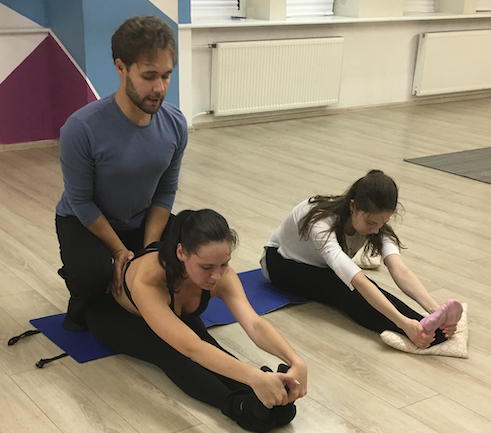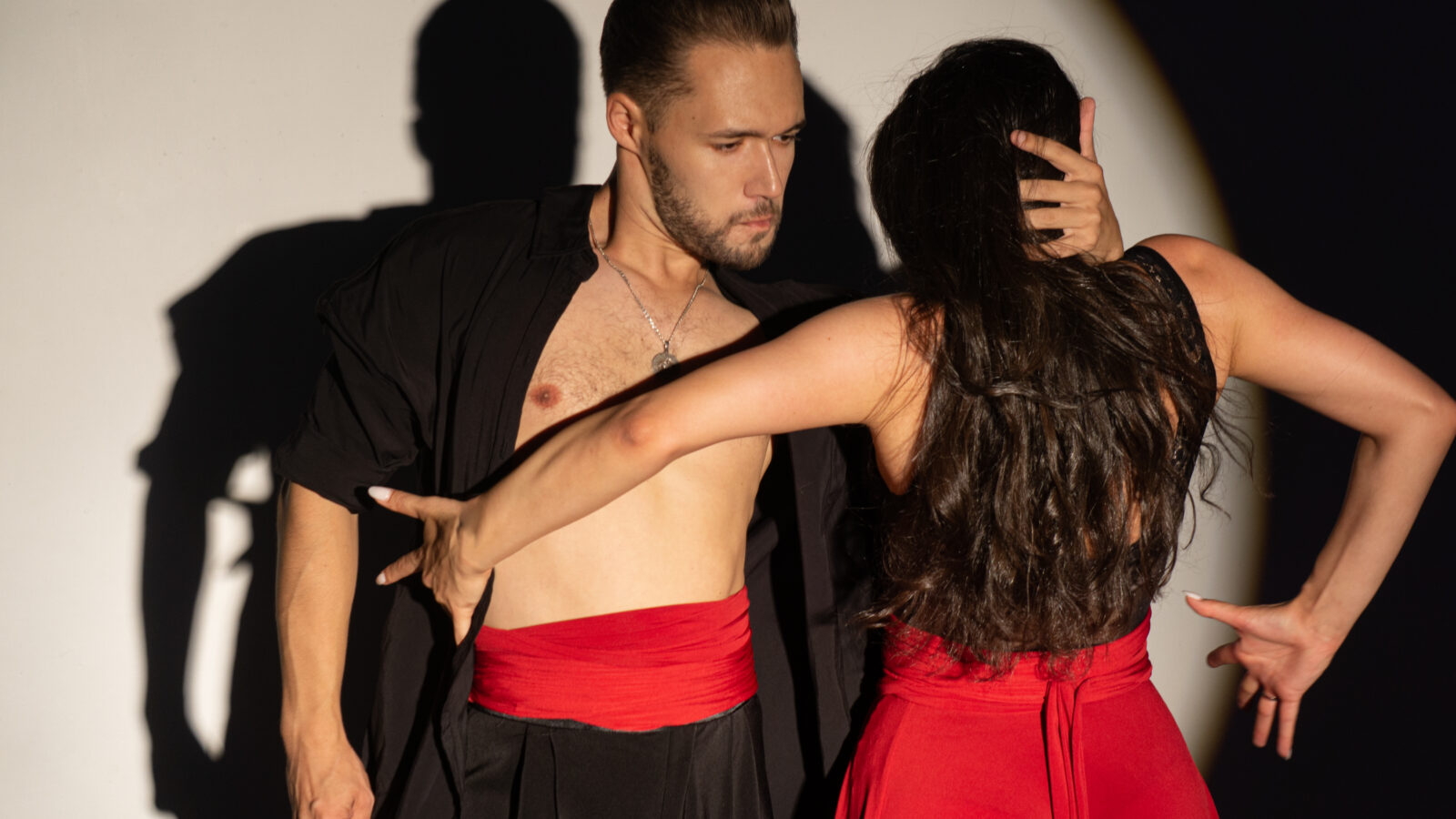California star coach Artem Syzdykov started dancing as a child by a twist of fate: his friend needed a partner to take classes, and so he jumped in to help.
After winning a few local and national competitions as a junior, Artem realized his passion for dance was only intensifying. However, since STEM came naturally to Artem, he decided to study robotics engineering.
Nevertheless, Artem couldn’t bid farewell to dancing, and so he joined the university dance team, where he met both his life and dance partner, Ekaterina Syzdykova. Soon, the couple won a number of prestigious competitions worldwide.
“I had been working on computer vision systems for space exploration, and robotics was easy for me,” said Artem. “Dance presented a bigger challenge. You have to communicate, connect and co-create something with another person.”
Although he was at the top of his robotics class, Artem decided to pursue dance as a career. After graduating, he implemented his engineering approach to training dance champions and helping people tackle health issues through movement.
Could you explain the thinking behind your method?
Thanks to studying robotics engineering, I see the body and dance as systems. By understanding the mechanics of steps and movements, and connecting them, I can share this knowledge with other dancers.
Professional dancing is just like sports: you can’t be too emotional or wait for inspiration to kick in, especially if you’re preparing for a dance competition. This systematic approach helped me in my professional career and it now helps our students, too.
We don’t merely explain how to make a movement: we give people a system to integrate dance into their life.

Could you explain your system and the thinking behind it?
Our approach is personalized and depends on what one wants to achieve through dance.
We create a plan and a path that the person follows, and then repeat systematic actions that help to achieve the desired results.
If someone is experiencing mental health issues and a lot of stress, our recommendations are different from those for a highly skilled dancer who is competitive and wants to win the world championship.
We normally plan for a season, which lasts for about a year, although sometimes people change their goals.

Could you give an example?
Sure. One of our success cases was a corporate executive in his 50s, who struggled with obesity and spent years trying to lose weight through fasting.
Through our dance regimen, he lost over 110 pounds and made a bold decision to compete in a championship with his partner, who was also senior. Despite competing with mostly younger couples, they took fourth place by showing high quality technique.
Our work started from dietary adjustments and mild exercise to strengthen his knees. Personally, it’s one of my biggest achievements as a coach. Helping a student juggle professional commitments, obesity, and health issues to win a championship is immensely fulfilling.
Could you share how you prepare students for championships?
We adapt the program for every individual student but, in general, it depends on where you are in the learning process. There’s time to dive into dance technique, posture, lines, etc. Shortly before the championship starts, details, performance, and music become much more important.
Normally, dancers come to us when they can’t break through a glass ceiling. For example, they never made it to the finals or repeatedly end up in second or third, never getting to first place.
For example, Nora Ravelo, the World Over 50 Latin Champion, came to us to develop a better understanding of technique. She is very talented, motivated, and competitive, and she wanted to move to a higher level.
We dived deeper into her style and dances such as pasodoble, the most authentic in the program. To dance it well, you have to know the history of movement: In pasodoble, every single muscle in your body has to dance.
For Nora, it was very detailed work and, therefore, emotionally and mentally straining, but she really shined at competitions.
What is your biggest challenge as a dance coach?
Unlike in professional sports, there are no quantitative indicators in dance. We can’t tell our students: Congratulations, you ran this distance in nine seconds today, when yesterday it was ten seconds. Our task is to show dancers their progress in order to keep them motivated.


